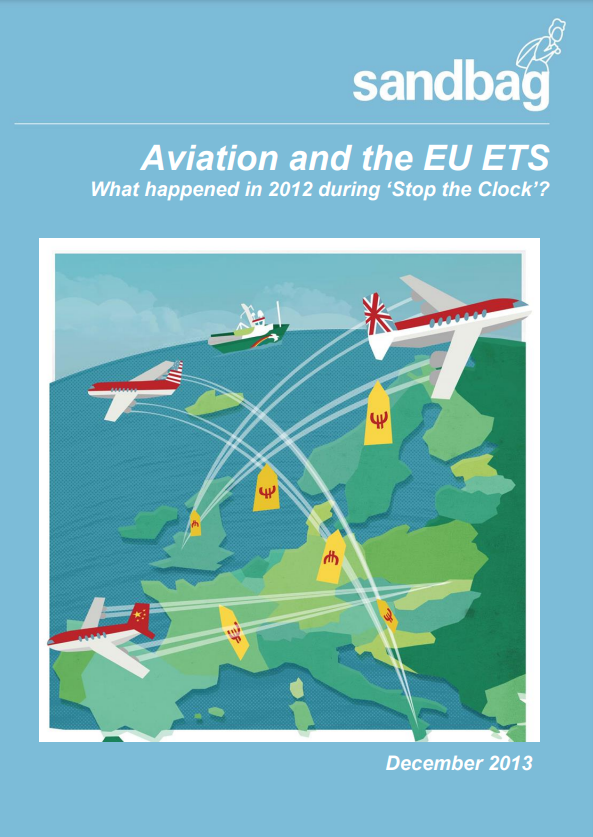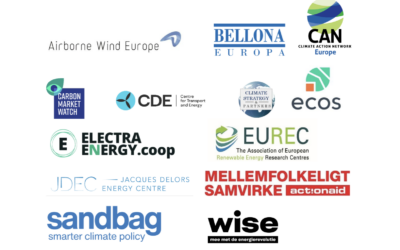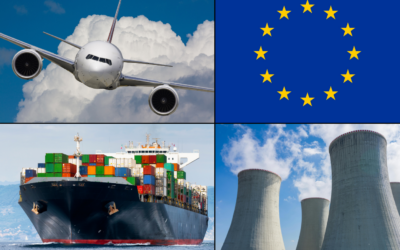The EU Emissions Trading Scheme (EU ETS) initially covered CO2 emissions from all flights to and from EU airports.
However, in 2012, facing significant opposition and threats of a trade war, the EU revised the scheme to include only intra-EU flights, a move known as “Stop the Clock.”
What is the cost of this scheme? How can it effectively reduce aviation emissions in the future?

About the report
The EU emissions trading scheme (EU ETS) was originally intended to cover CO2 emissions from all flights arriving and departing from EU airports.
Amid fierce opposition and threats of a trade war, Europe temporarily amended the scheme for 2012 to only include flights within the EU, known as Stop the Clock.
This report reveals how the rhetoric is out of sync with reality, how the scheme costs much less than many initially claimed, and how it can be effective in the future to address aviation pollution.
The background
Global aviation is responsible for 2.5 percent of global carbon emissions, which increases to 4.9 percent of total anthropogenic climate effects if all radiative forcing is included. If the sector were a country, it would already be the seventh most polluting on the planet.
Emissions from global aviation are growing at a rapid pace: the International Civil Aviation Organization (ICAO) forecasts that by 2036 emissions will increase between 155 percent and 300 percent compared to 2006 levels.
After more than a decade of international discussions struggling to find a global solution to cover aviation emissions, the EU set out to create a system. Starting 1 January 2012, the EU took the modest step of including the aviation sector in its carbon market (also known as the EU Emissions Trading System – EU ETS).
What happened in 2012?
Under the scheme in 2012, over one thousand airlines and operators participated, emitting 84 million t/CO2, which accounted for about a third of all European aviation emissions. The majority of emissions, 89% (75 million t/CO2), came from EU airlines, while 11% (9 million t/CO2) originated from non-EU airlines operating flights between European airports. A total of 71 million free allowances (“EUAAs”) were issued, with 81% (58 million EUAAs) allocated to EU airlines, and the remaining 19% (13 million EUAAs) allocated to non-EU airlines.
Despite well-publicized opposition from aviation officials in various countries, major airlines from the so-called “coalition of the unwilling” complied with the “Stop the Clock” policy in 2012. These airlines included Cathay Pacific, Japan Airlines, Asiana Airlines, Siberia Airlines (S7), and Delta. Additionally, some airlines from these countries went beyond the legal requirements by including their international flights within the scheme, covering emissions outside the EU. Among these were Korean Air, Nippon Cargo, FedEx, and Airbridge Cargo. EU airlines such as Lufthansa Cargo also chose not to return their free allowances, instead covering emissions outside the EU. Lufthansa Cargo’s generous allocation of free allowances left them with a valuable surplus, likely influencing their decision not to “Stop the Clock.”
The cost of compliance was also estimated to be lower than expected for those with a shortfall of free allowances. For example, Ryanair originally estimated that including its flights in the ETS would cost €15–20 million in 2012. Consequently, the low-cost carrier added a €0.25 charge to all tickets to cover these costs. However, average 2012 carbon prices suggest that compliance costs were actually lower, implying a cost to passengers of only €0.13 per flight, allowing Ryanair to retain the difference—an estimated €8 million.
The new proposal
The EU Commission has introduced a new proposal for a scheme that would cover a percentage of flights within EU airspace until a review in 2016, contingent upon ICAO’s progress toward a global scheme by 2020.
Although this approach is extremely modest compared to what Sandbag considers environmentally necessary, an airspace-based approach seems like a balanced compromise for now. It maintains pressure on ICAO without infringing on other countries’ airspace or discriminating between airlines and business models.
Put simply, an EU airspace approach is the bare minimum required, and further expansion in 2016 should be automatic if ICAO does not reach an agreement.
Related publications
ICC reform and expansion risks diverting ETS revenues from real climate action
Sandbag and 14 other organisations urge the European Commission to reform, not expand, the ETS Indirect Cost Compensation scheme — warning that current proposals risk diverting climate funding into untargeted fossil subsidies.
Simulating CDR in the EU ETS: The Risks of Premature Integration
The EU’s 2040 climate targets suggest integrating carbon removals into the ETS — but at what cost? This report uses Sandbag’s simulator to assess whether the risks of premature CDR integration outweigh the benefits.
The EU ETS at a Crossroads
Sandbag’s latest submission to the EU ETS and Innovation Fund consultation calls for clearer rules on free allocation, stronger criteria for funding innovation, and safeguards against misleading carbon accounting practices.



